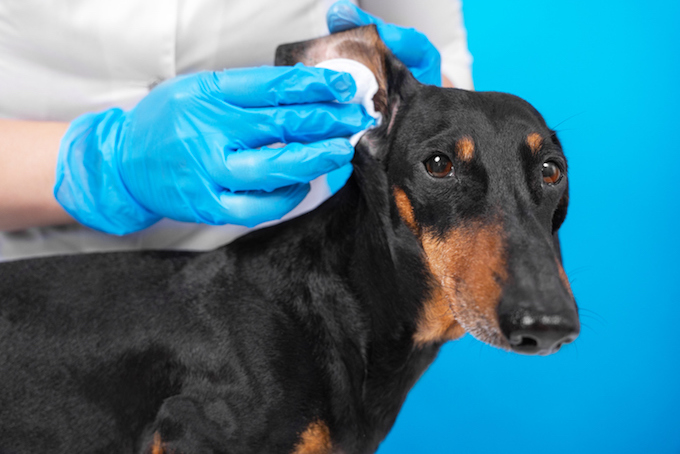Malassezia dermatitis in dogs is a fungal infection caused by a type of yeast. The condition affects a dog’s skin and ears.
Technically, the name of the yeast that causes the infection is called Malassezia pachydermatis.
In some cases, the condition can be congenital. For example, certain dog breeds including Basset Hounds, Poodles, and Springer Spaniels are more likely to develop it than other breeds.
If you see the signs of malassezia dermatitis in your dog, then get to a veterinarian for a proper diagnosis and treatment.
Here’s what you should know about the symptoms, causes, and treatments for the condition.
Symptoms of Malassezia Dermatitis in Dogs
The condition produces a range of symptoms that affect the skin and ears. For instance, some of the most common symptoms include:
- Hair loss
- Redness
- Irritated skin
- Lesions (with a smelly discharge)
- Skin turning scaly
- Ear infections
- Skin turning darker in patches
Causes of Malassezia Dermatitis in Dogs

The cause of the condition is a yeast known as Malassezia pachydermatis. However, other contributing factors include:
- High temperatures
- High humidity
- Immune system issues
- Allergies
- Hormonal problems
Additionally, in some cases the condition is congenital. For example, some of the dog breeds most likely to develop the condition include:
- Basset Hounds
- Springer Spaniels
- Poodles
- German Shepherds
- Jack Russel Terriers
- Shetland Sheepdogs
- West Highland White Terriers
- Chihuahuas
- Golden Retrievers
- Dachshunds
Treatments for Malassezia Dermatitis in Dogs
Firstly, your vet will ask about your dog’s symptoms. Secondly, your vet will ask about your dog’s medical history and any breed specific problems.
Thirdly, a full physical examination will be carried out.
Next, blood and urine tests will be taken. Additionally, skin tissue samples will be used to confirm the condition.
In short, treatment begins with antibiotics to get rid of the yeast. As always, if your vet prescribes your dog any medicine, follow the precise dose and frequency instructions. Also, complete the full course of medicine.
Additionally, your vet can prescribe a topical medicine to help with your dog’s symptoms and any skin irritation.
Have you ever cared for a dog who suffered from this condition? How did your vet help your dog recover? Let us know in the comments section below.









